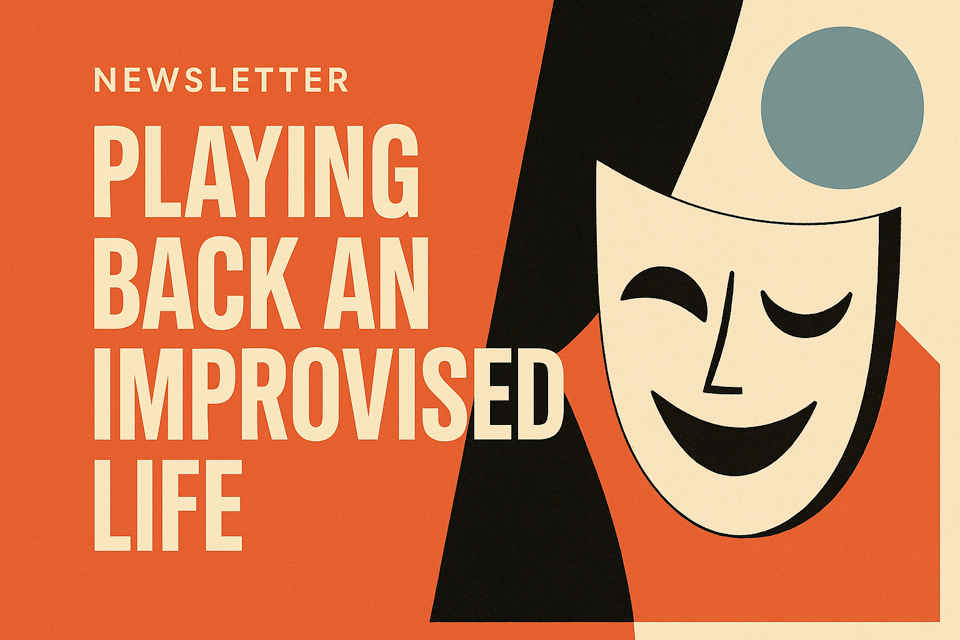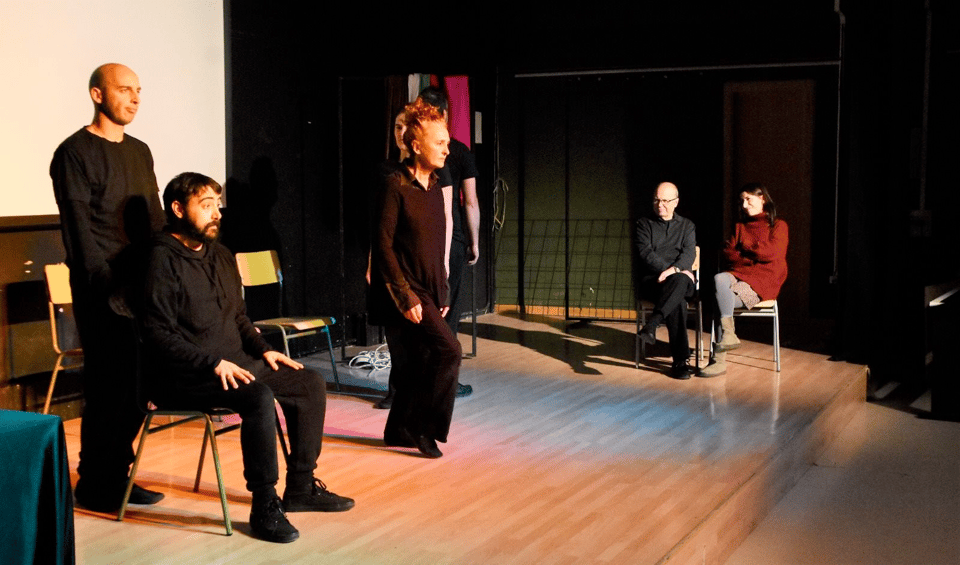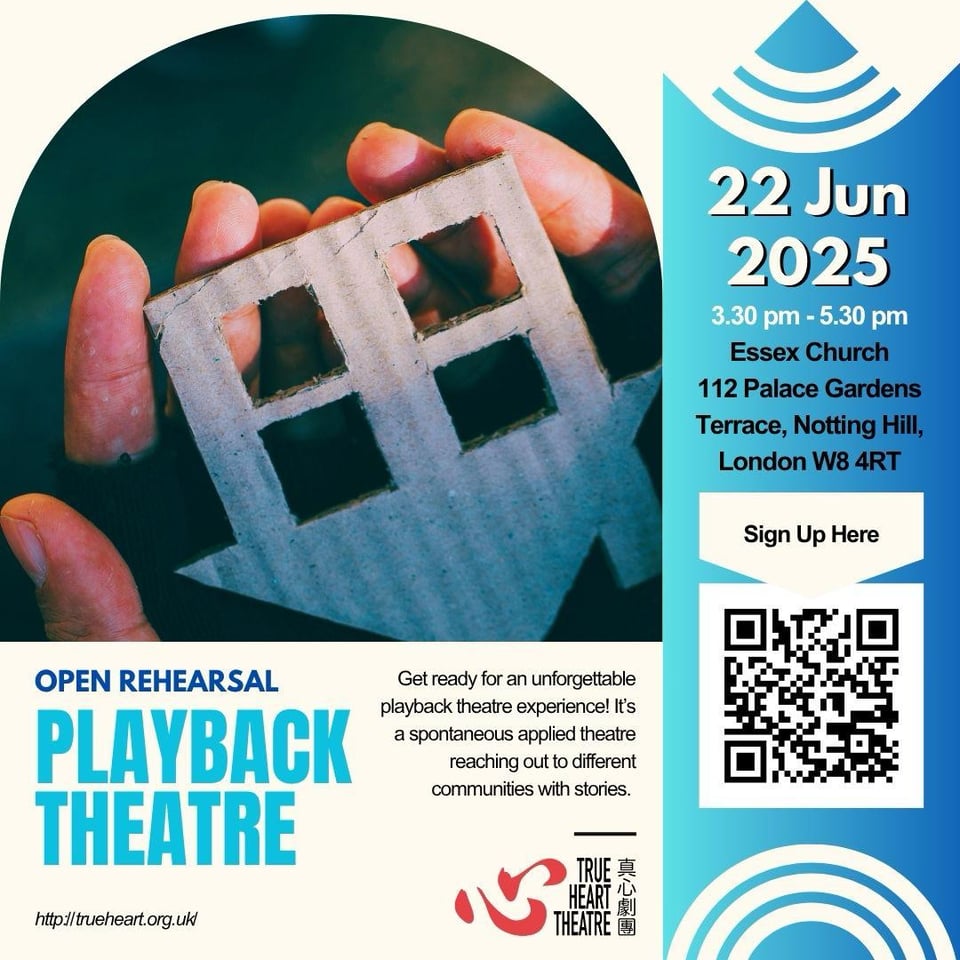X - A quite nostalgic week
Celebrating my 10th newsletter, reliving Britpop nostalgia, diving into improv tips and talking of a particular playback theatre form!

Greetings, everyone! I want to start by patting myself on the back: I've successfully published ten weekly newsletters! This consistency is a real win for me, as it's something I often struggle with. Honestly, the few acknowledgments I've gotten from you, dear readers, are a huge motivation to keep going. Please let me know if you find my newsletters too long or the content too scattered. Thank you for your support!
You might be wondering about this week's newsletter title. Well, last Saturday, I saw Pulp live at The O2 Arena, and it was like diving straight back into my youth. The picture below, of my younger self in my bedroom, shows just how much Britpop I listened to in high school and university; it was a great way to learn English. Bands like The Smiths, Placebo, and Blur were on repeat on my playlist, but Pulp was always always overpopulating it.

Hearing those songs live again reminded me of those days lying on my bed, with my ears plugged into a discman rolling the albums from Jarvis Cocker’s band. Back then, I'd never imagined myself moving to the UK and experiencing the life that inspired those songs. Yet here I am.
I'm so glad that Pulp decided to come back, with a new album nonetheless, and tour for everyone to hear them again. That gives me hope to see them again in the future. They are also a good example that, for creative minds, there’s no such thing as retirement.
Fun fact: I was such a dedicated fan that I even subscribed to Pulp's physical fan club newsletter! Every now and then, I'd get an actual letter from the UK, packed with all the latest Pulp news and curiosities.
🧠 The Improv bit
Today I fancy speaking about one of the things included on the list of things to NOT DO when improvising: Steamrolling.
Why would someone steamroll a scene? Often, it's because they're desperate for stage time, squeezing every last second they can get under the lights. Another reason might be a strong conviction that their idea is exactly what the scene needs, causing them to shoehorn it in even when it doesn't quite fit. Sometimes, though, it's entirely unintentional – they're just not paying close enough attention.
I’m not saying that some might steamroll from a bad place, but from a place of lack of understanding, so it’s quite a common mistake many newcomers do. For much as I dislike these kind of analogies, Improv is a team sport. Finding balance among the players is crucial to achieve the blessed sense of togetherness that improv brings.
Tips to avoid steamrolling:
Work on a better listening of your team mates.
Learn how to “read the room”.
Develop an “eagle view” of what’s going on the stage, gaining objectivity.
If you have an impulse, ask yourself “Does the scene benefits of my idea?” Improv is also knowing how to let go.
Remember that sometimes the best way to help is not to help at all.
As I said, most of the times steamrolling is not done on purpose, but there are indeed narcissistic improvisers that might ruin the mood, specially on improv jams. If you have ideas on how to defuse them, I’d be happy to hear them.
To contradict a litlle bit, steamrolling can be helpful to save a scene when done by an experienced improvisers! It might be to help the story progress or bring it back to rails.
🪑 The Playback Theatre bit (PT)
Because I grew up as a PT actor without regulated training, at least on my early years, the way I learned the form of pairs was, peculiar. It wasn’t the original form created half century ago.
In Playback Theatre (PT), the pairs form brings inner conflict to life. It's a powerful way to explore moments of indecision, those "shall I do this or shall I do that?" dilemmas, by highlighting the contrast between opposing forces. Usually performed with two actors, one behind the other, they physically embody and struggle over each stance, creating a dynamic sense of push and pull.

However, many companies have found different ways to showcase a dilemma. When I started, in Teatro Playback Inestable, we used three techniques.
The first, and the one I found more 'in the wild,' is the back-to-back, or 'two sides of a coin,' technique. The actors start joining their backs, giving their sides to the audience; they then spin and make statements about the stance facing the audience. We found two iterations of each stance were usually sufficient.
The second technique focuses on the contrast between the rational and the emotional. One actor would sit in front of a standing one, so their head is at the level of the gut. The standing actor would state objective facts in the most neutral way possible, like a news presenter; while the sitting actor would go over the top with emotions.
The third technique comes into play when we have an odd number of cast members. The solo playbacker stands in the middle, showing the struggle of one stance through subtle movement or a few words, before performing a 360-degree spin to embody the opposite.
I reiterate that these aren't the ones you'll find in an official Playback Theatre 'driving test,' but I think it's fun to explore different ways to experiment with contrast in a way that might fit this form.
🎭 The Theatre bit
This week I went back to theatre from my homeland with the play De Sukei a Naima (From Sukei to Naima) from the Valencian playwright Gemma Miralles, premiered on 2017.
This is an intergenerational play with twelve scenes spanning from 1587 to 1618, during the Expulsion of the Moriscos from the Kingdom of Valencia. A story about colonialism through the lens of a muslim family, specially from the women of that family. Sukei, her daughter Aixa, and her granddaughter Naima.

The play is written with delicacy, presenting the different struggles of the members of the family. The ones who decide to go and the ones who decide to stay with an inner resistance of abandoning their faith in favour of converting to Christ for the sake of their children.
While reading it, it is inevitable to find parallelisms with the situation that muslims have been living during decades in the West Bank. It also, for me, brings the shame of the history of my country and its blood soaked imposition of Christianity.
🗣️ Shout-out
Last Sunday I got to catch up with colleague Acaprov-member-on-hiatus Pascal Blaschta and I am happy I did. He’s a great actor and amazing freestyler working on a documentary about it. I truly miss performing with him. You can catch him one Thursday of every month running the Freestyle Thirst Jam at Shoreditch Balls and, apparently, working as an extra on the Star Wars series Andor, which gave me low-key envy. 😛
He’s great, I mean look at this.
📆 What is coming up

Do you want to peek into this Playback Theatre thing? Join us for an open rehearsal in the Notting Hill area. No experience needed. It’s free, although a donation of £5 to ease the space costs is very welcome. To have a better sense of who’s coming and how many, we encourage you to register through this form.
📚 🎮 🎥 📺 The geeky dessert
We started with nostalgia, let's also end with nostalgia. When I think about an X, like the one in the title, I'm reminded of the first time (unintended Pulp pun) I bought a console with my own money. Our home, growing up, was console-free. We did have a PC, but playing on it was the source of many side-eyes from my parents; it was just for schoolwork.
As an adult, in 2006, I got a modest TV, a PlayStation 2 Slim, and a copy of Final Fantasy X for my room in a shared flat. This was my very first game in the series, and it was also the first time I discovered the richness of a story capable of leaving you in tears by the end.

Last week I installed it on my Steam Deck and the slap of nostalgia was considerable, probably fueled by the music of Nobuo Uematsu. The visuals are definitely aged, even for a remastered version, but the charm still there. Most likely, I will complete the playthrough to capture those feelings I had twenty years ago. Have you played it?
✨ That’s all folks ✨
Thanks for reading Playing Back an Improvised Life, a newsletter by Ferran Luengo.
If you like it, spread the voice and share with someone who you think might enjoy it.
If you want to keep in touch, feel free to follow me on instagram (@luenkun).
Want to work with me or start a conversation? email me 😀
Want to support me? You can do it through my Ko-fi page

Ferran Luengo
